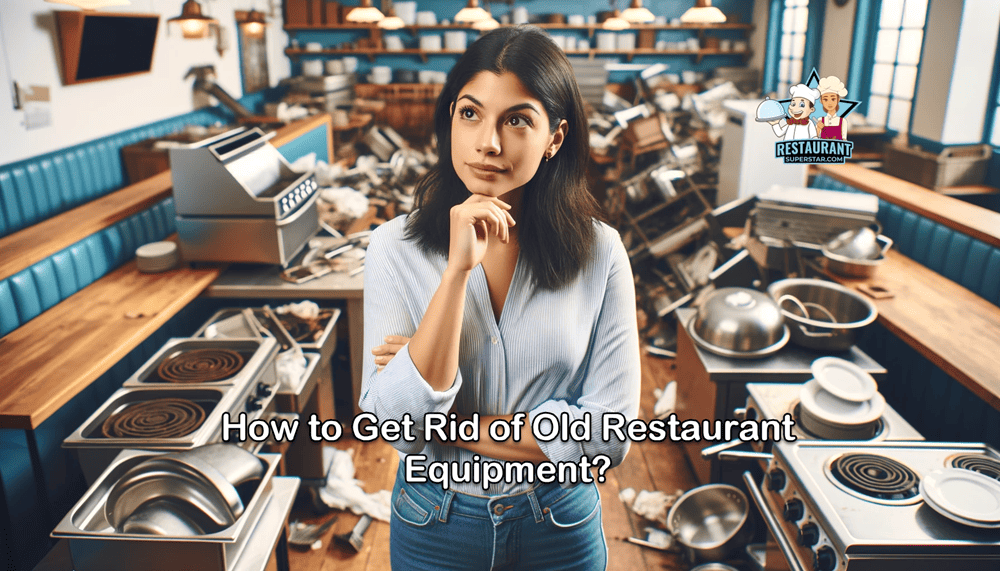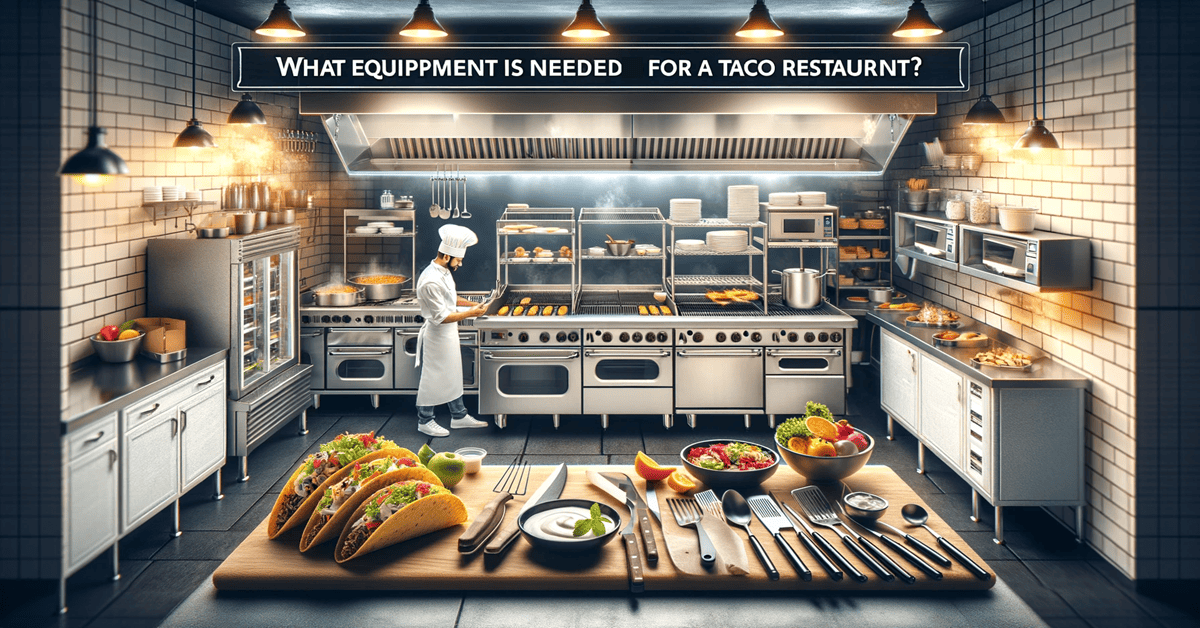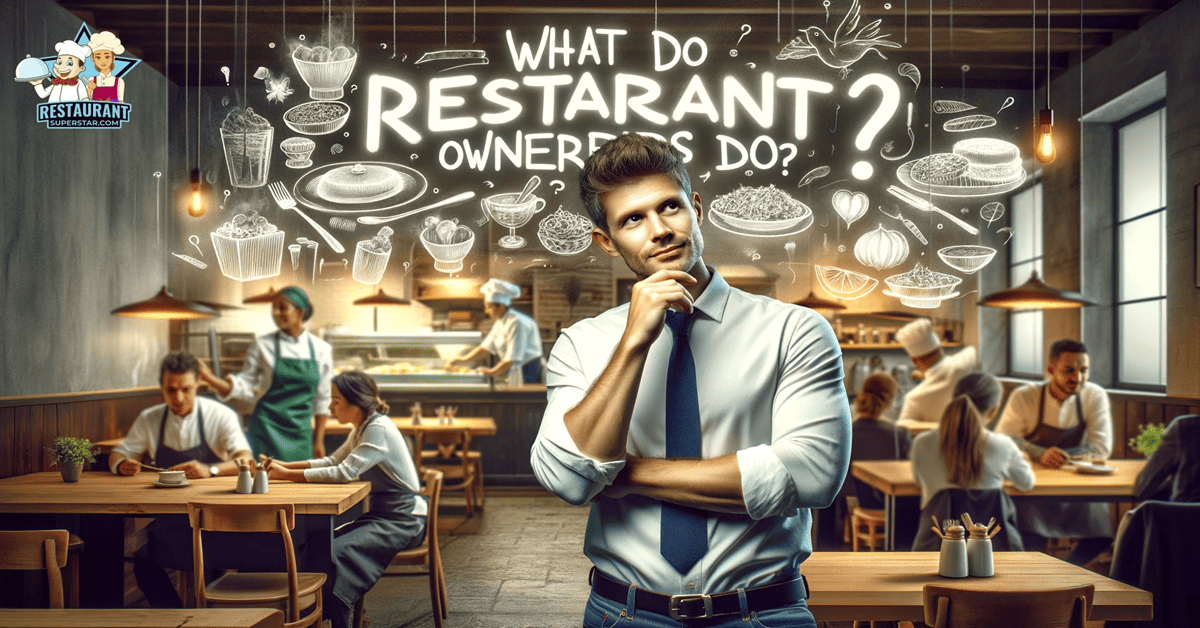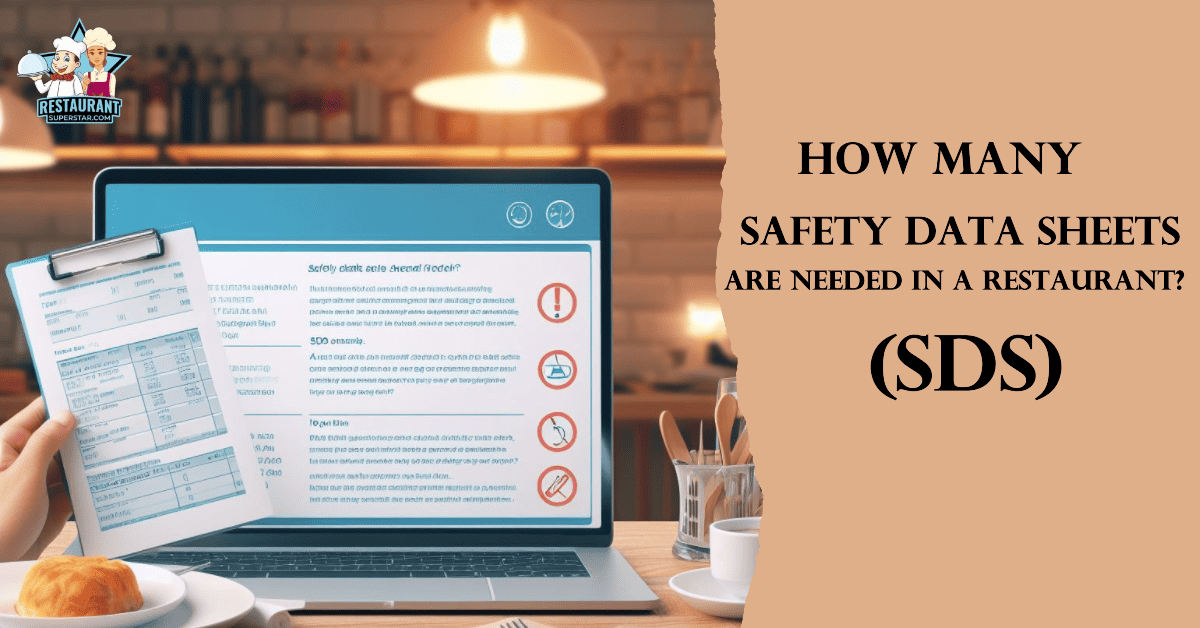How Much is a Grease Trap for a Restaurant?
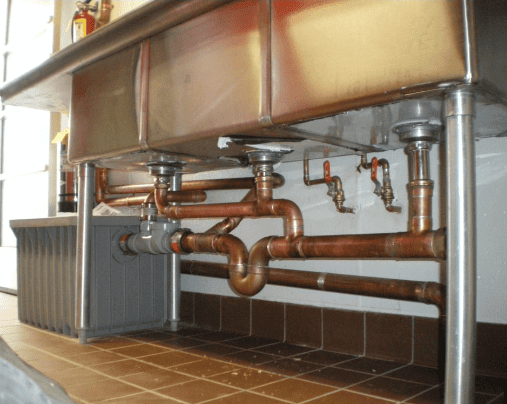
Have you ever thought about the intricate dynamics of your restaurant’s plumbing? Perhaps, pondering, “How much is a grease trap for a restaurant?” If you’re nodding, then this is just the read for you.
We’re about to dive deep into the intriguing world of grease traps, covering the cost and much more.
How Much is a Grease Trap for a Restaurant?
How much is a grease trap for a restaurant? The price of a grease trap for your restaurant isn’t just a flat fee. It’s a dance of variables – from types and sizes to installation nuances. You could look at an average of anywhere from $250 to $8,500.
But before you gasp, let’s dive deeper. By the end of this piece, you’ll see there’s a method to the madness, and the value these grease traps provide is worth every penny.
Now that we’ve set the stage hold onto your apron because we’re about to take a culinary journey into the world of grease traps.
From manual to automatic, from the petite to the mammoth, we’ve got all the flavor profiles covered.
Whether you’re a newbie restaurateur or a seasoned chef, this article has something for everyone.
And who knows, you might find that golden nugget of information you’ve been searching for.
Before we dive into the nitty-gritty, a little intro might be in order.
Understanding the Grease Trap’s Role in Your Restaurant.
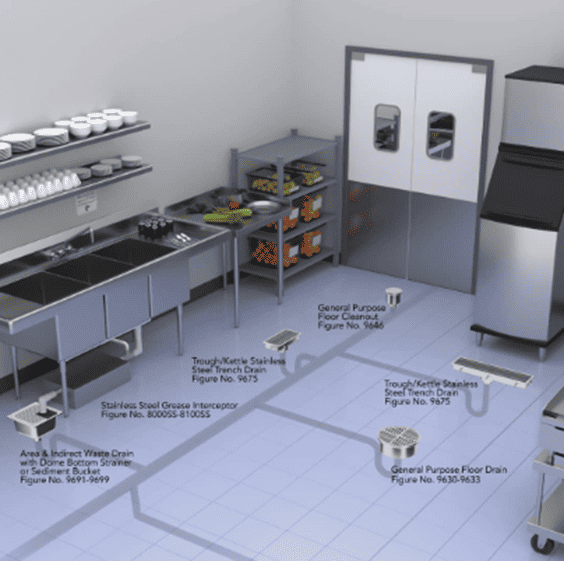
Have you ever been lost in the aroma of a sizzling steak or the crispy crackle of fried chicken from the kitchen and wondered about the backend magic that keeps everything running smoothly? It’s not just about fresh ingredients or an expert chef.
Some unsung heroes ensure your restaurant stays functional and environmentally compliant.
One such hero? The grease trap.
Let me break it down for you: every time a pot or pan is washed in your restaurant, fats, oils, and grease (often called FOG) get flushed down with water.
Now, imagine all that grease heading straight into the water system.
A recipe for disaster, right?
That’s where the grease trap comes in. It acts as a barrier, capturing all the grease and letting only water pass through, protecting our sewers our environment, and ensuring your restaurant isn’t hit with hefty fines.
Now, you might be thinking, “Sounds technical. Do I need to know all this?”
Here’s my two cents: Knowledge is power.
And in the restaurant world, this could mean saving thousands of dollars in potential repairs and fines.
Speaking of cents, let’s talk about the big question: How much is a grease trap for a restaurant?
Hi, I’m Jeff, a sun-soaked Florida resident with a penchant for everything restaurants.
For over a decade, I’ve been assisting restaurateurs as a consultant, helping them navigate the myriad of challenges they face.
I’ve seen everything from menu crafting to setting up sustainable kitchen systems.
And let me tell you, understanding the ins and outs of grease traps has saved many of my clients from unnecessary headaches.
So, whether you’re just setting foot in the restaurant world or have been a part of this fantastic industry for years, join me as we delve deeper into the world of grease traps – their importance, costs, and functioning.
Buckle up; it’s going to be an enlightening ride.
The Essence of a Grease Trap in a Restaurant Setting
Back in my early days, when I was dipping my toes into the restaurant consulting waters, I remember this vibrant diner by the beach.
Great food fantastic view, but oh boy, did they have a FOG problem!
One rainy day, the place was filled with an awful stench, the floors became slippery, and that day, they learned the hard way about the significance of FOG management.
But what’s this FOG everyone’s talking about?
Understanding FOG – Fats, Oils, and Grease
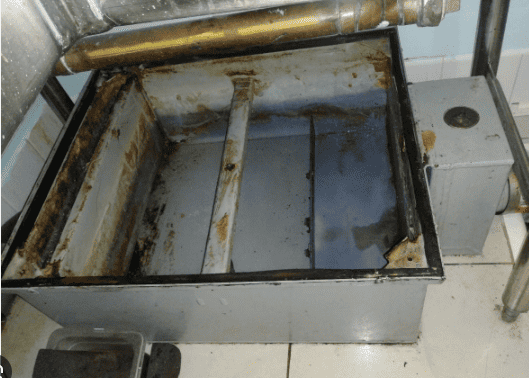
We all love a juicy burger or crispy fries now and then. But every time these dishes are prepared, they leave behind FOG – Fats, Oils, and Grease.
While essential for giving food its mouthwatering texture and taste, FOG can be a nightmare for restaurant plumbing.
Think of it as cholesterol for your pipes; over time, it can lead to clogs, nasty overflows, and even damaged pipelines.
Proper FOG management isn’t just about efficient restaurant operations; it’s also about saving hefty amounts in potential repairs.
Restaurant Sanitation and Hygiene
Let’s face it: nobody likes a messy kitchen, especially not where you’re serving food to customers.
Grease overflow can create a slippery, dangerous workspace. I’ve been to kitchens where the excess grease buildup was almost like an oil spill, and trust me, it’s no place you’d want to whip up a sandwich.
Properly installed and maintained grease traps ensure your kitchen remains clean, safe, and, most importantly, hygienic.
Environmental Compliance
Here’s a lesser-known fact: Many local municipalities have strict regulations about how much FOG a restaurant can release into the public sewer system.
Too much grease and you’re not just looking at clogged pipes; you’re looking at potential fines, legal troubles, and even temporary shutdowns.
Moreover, uncontrolled FOG can pollute local waterways, affecting aquatic life and the surrounding environment.
Investing in an effective grease trap system safeguards your restaurant and does your bit for Mother Nature.
Focusing solely on the food and forgetting the gritty backstage operations is easy.
However, knowing the ins and outs of aspects like grease management can distinguish between a smoothly running eatery and an operational nightmare.
Next, we’ll dive into the dollars and cents of it all – how much does a grease trap for a restaurant cost?
Cost Variations of Different Grease Traps
Every restaurant owner’s itching to ask the big question: “How deep do I have to dig into my pockets, Jeff?” Well, my sun-soaked friends, the answer is – it varies.
Let’s break it down a bit. In advising restaurants, I’ve seen all grease traps, from bustling Miami streets to the laid-back keys. And each comes with its price tag.
Here’s a quick breakdown.
Manual Grease Traps
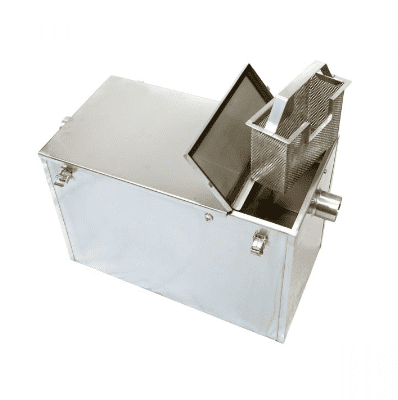
Manual grease traps are like the reliable old truck you’ve had since college. They’re straightforward, effective, and don’t require a master’s degree. These are typically placed right under your sink, catching that pesky FOG before it even thinks of heading down your drain.
- Features: Manual grease traps are pretty bare in design. They rely on a passive system to slow the wastewater, allowing FOG to separate and rise to the top. No fancy tech, no electricity, just good ol’ physics.
- Typical Pricing: These little wonders are also on the affordable end of the spectrum. Depending on the size and make, you’re looking at anywhere from $150 to $1,500. A word of advice: Take advantage of these. An excellent manual trap can save you many headaches down the road.
- Example: Take the Regency 14 lb. 7 GPM Grease Trap with 2″ Non-Threaded Connections. The last time I checked, it was priced at around $174.99. Not too shabby, eh? It’s compact, easy to clean, and perfect for smaller establishments or ones that produce less greasy waste.
But, of course, manual traps are just the tip of the iceberg. There’s a world of grease traps out there to explore.
Automatic Grease Traps
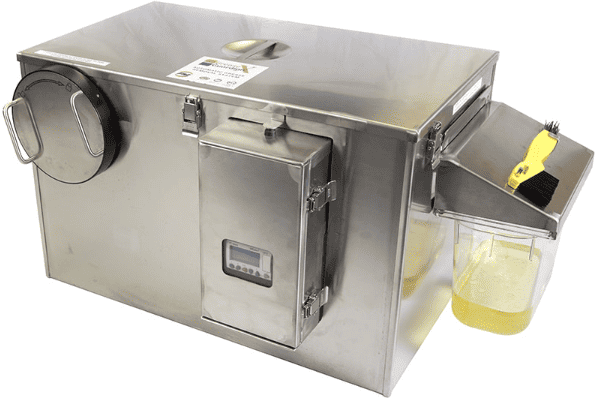
If manual grease traps are that trusty old truck, automatic grease traps are the sleek Teslas of the grease world.
When I’m consulting for upscale spots in downtown Tampa or those fancy beachside eateries in Fort Lauderdale, they often lean toward the automatic models.
And there’s a good reason for it.
- Features: These babies do the heavy lifting for you. Automatic grease traps are designed to, you guessed it, automatically remove the FOG from your wastewater. It’s like having a mini-robot constantly on the lookout, ensuring no grease gets past its watchful sensors. Most come equipped with heaters to liquefy solidified fats and skimming wheels or mechanisms to draw out the FOG. It’s techy, it’s smart, and it’s oh-so-convenient.
- Typical Pricing: Now, here’s where things get a bit pricier. Quality and automation come at a cost. Depending on the capacity and features, you could look at anywhere from $1,000 to $7,000. But remember, while the upfront cost might be higher, efficiency and decreased maintenance can save you dollars (and sanity) in the long run.
- Example: Let us introduce you to the impressive Grease Guardian GGX15, a top-tier 15 lb. Automatic Grease Removal Unit. Although it is pricier, its exceptional features make it a worthwhile investment. Last I saw, it was tagged at around $3,499. But boy, does it deliver. It’s one of those units that makes you nod in appreciation. Compact, efficient, and powerful. It is ideal for busier restaurants that want to avoid the hassle of frequent cleanings.
In my Floridian consultant’s opinion, automatic grease traps are an excellent investment, especially considering long-term gains and ease of operation.
So, if you’ve got the budget and want to ride the wave of technology, this might be your route.
Gravity Grease Traps
Gravity grease traps – the giants of the grease world. When I’m down in Miami consulting for those big resort hotels or grand banquet halls, this is the beast they’re most often wrestling with.
Not that it’s terrible; these traps are designed for heavy-duty and can handle the busiest kitchens.
Let’s dive right in.
- Features: These are not your under-the-sink models. Gravity grease traps, as the name suggests, use the reasonable old force of gravity to separate FOG. Installed underground, they’re much larger tanks that allow wastewater to flow through, and as it does, grease floats to the top while solids settle at the bottom. They’re robust and durable, and with their size, you won’t need to clean them as often. But when you do, you’ll likely need professional help.
- Typical Pricing: These traps are costly due to their size and the complexity involved in installation (think excavation and construction work). On average, prices can range from $2,500 to $8,500. But remember the capacity and the long intervals between cleanings, and you might see the value proposition.
- Example: Here’s a model I’ve seen in action and can vouch for – the Zurn GT2700-50-6NH 100 lb. 50 GPM Grease Trap with 6″ Threaded Connections. Last time I checked, the price tag was around $5,999.00. Steep, I know, but it’s a reliable workhorse. This bad boy can handle the grease load of a bustling restaurant like a champ, making it worth every penny for the proper establishment.
In my years in the Florida sun helping restaurants of all sizes, I’ve come to respect the gravity grease trap for what it is – a reliable behemoth that can keep a large kitchen running smoothly.
Investing in one of these might be a no-brainer if your restaurant has the traffic and kitchen hustle to match.
Key Factors Influencing Grease Trap Installation Costs
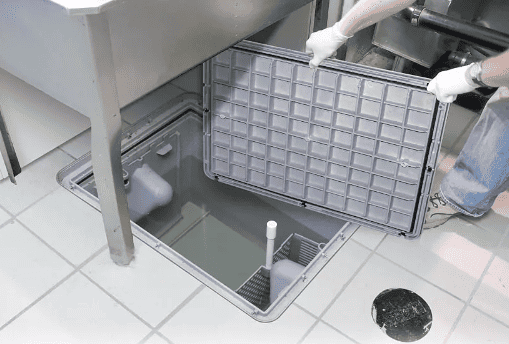
If you’ve been following along, we’ve discussed the different grease trap types and their prices. But I’d be careful to touch on installation costs.
Being in the sunny state of Florida and working with countless restaurants, I’ve seen installations that were a breeze and others… well, not so much.
Let’s dive into what influences those installation charges, shall we?
Grease Trap Types and Their Installation Complexities
First, not all grease traps are equal, and neither are their installation processes. Here’s my breakdown from the years I’ve spent consulting:
- Manual Grease Traps: Typically placed right under your sink, these are the most straightforward to install. Most often, there’s minimal plumbing alteration needed, so your costs are on the lower end. They’re like installing a new dishwasher, maybe even more uncomplicated.
- Automatic Grease Traps: A bit more complex. These babies need both plumbing and electrical setups. They automatically process and remove grease, which is fantastic for the busy restaurant owner. But remember that automation requires more hands-on work during installation, translating to higher costs.
- Gravity Grease Traps: The big guns of the grease world. Because they’re underground, you’re looking at excavation, more intensive plumbing, and a larger-scale project. This complexity does mean they’re the priciest to install. But then again, they handle more grease and need less frequent cleaning, so there’s a trade-off.
Impact of Grease Trap Size on Installation
Alright, so we’ve tackled the types, but size? Oh, size matters, my friends.
- Capacity and Cost: Generally, the bigger the trap, the bigger the cost. It’s not just about the trap itself but the work involved. Larger traps need reinforced flooring, special equipment to lift and position, and more person-hours to install.
- Space Considerations: If you’re running a cozy beachside café in Tampa versus a large diner in Orlando, your available space can significantly affect installation. Tighter spaces might require more work or even minor renovations. Always factor this into your budget.
- Future-Proofing: I always advise my clients to think of the future. Suppose you expand your restaurant or add a new line of fatty, delicious foods. In that case, consider going for a more giant trap now rather than upgrading later. Yes, it’s a higher initial investment, but it could save you cash in the long run.
I’ve seen many restaurant owners get blindsided by installation costs, and trust me, it’s not a fun surprise.
Always factor in the unit’s cost and getting it up and running. It’s like buying a boat – the price is one thing, but the dock fees, maintenance, and fuel?
That’s where they get you. Don’t let your grease trap be your money sink. Always plan.
Importance of Grease Trap Location
So, you might be thinking, “Jeff, just tell me where it’s cheapest to install!” Well, it isn’t that simple, my friends. Here’s my take:
- Indoor Installations: Ideal for those manual traps, placing them indoors, especially under the sink, is straightforward. The labor costs are generally lower, but remember, you’re giving up some of your indoor space. That can be a real estate premium, especially in those swanky Miami hotspots.
- Outdoor Installations: Your gravity grease traps usually sit outside, and there’s a good reason. They’re big and need the space. Outdoor installations can be pricier because of excavation and other site work. However, they save you indoor space, and with Florida’s weather, there’s less risk of freezing problems compared to other states.
Navigating Plumbing Complexities
Plumbing. It’s like the circulatory system of your restaurant, and sometimes, it needs a little TLC.
- Old Plumbing Systems: If you’re setting up shop in one of Florida’s charming older buildings, be wary. These often come with aging plumbing systems, which can be a wildcard when installing a grease trap. Sometimes, you’re in luck, and it’s smooth sailing. Other times? You might need some repairs or upgrades before your grease trap is operational. This, of course, means a bump in your costs.
- Potential Repair Costs: Always have a contingency budget even if you aren’t in an older establishment. I’ve seen instances where an unforeseen plumbing issue pops up mid-installation. It’s like finding out your boat has a tiny hole when you’re halfway across the lake – you must patch it up pronto.
I can’t stress the importance of a suitable evaluation enough before you jump in. Get a plumber to check out your system and give you the green (or red) light before you invest.
And always, always account for a little extra in your budget. I often tell my restaurant pals, “Hope for the best, but plan for those pesky surprises.”
Local Regulations and Their Impact on Costs
Anyone in the restaurant biz in Florida knows that local regulations can be your best friend or your not-so-friendly neighbor. Let’s dive deep into this.
Importance of Adhering to City or State-Specific Regulations
Now, I’ve worked with many restaurant owners over the years, and let me tell you, the ones that didn’t heed local regulations? They learned the complex (and expensive) way.
- Avoiding Fines and Penalties: Florida must mess around regarding grease trap regulations. Different cities and counties have specific rules, and failing to comply can hit you with hefty fines. I’ve seen some folks in Tampa and Orlando get slapped with penalties that made their eyes water.
- Ensuring Smooth Operations: You want to avoid the city coming in and shutting you down because your grease trap isn’t up to code. Ensuring you adhere to local rules keeps the city off your back, and your equipment functions properly. A malfunctioning grease trap can be a natural mood killer on a busy night.
- Costs Associated with Complying: Here’s the thing: investing in a grease trap that meets your local regulations might seem like an enormous investment. It could be a particular size requirement or a specific installation procedure. But let me tell you – and I can’t stress this enough – it’s WAY cheaper than dealing with fines, operational hiccups, or public relations nightmares later on.
- Eco-Brownie Points: Many of these regulations exist for a reason, folks. They help keep our beautiful Florida waters clean and pollution-free. Adhering to them not only helps you avoid legal issues but also gives you that eco-friendly badge, which, let me tell you, diners these days appreciate.
So, my advice to all my fellow restaurateurs? Do your homework. Before you make any decisions, make a quick call to your local city or county office.
Please find out the specifics of what they require. Consider it an investment in peace of mind and keeping those diners returning for more.
Cleaning Your Grease Trap: What’s the Damage?
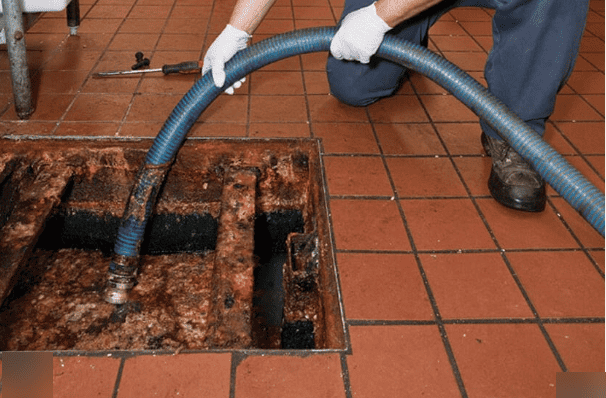
So, we’ve talked about installation costs and regulations. But now let’s get into the nitty-gritty: cleaning.
It’s not the sexiest part of the restaurant business, but it’s essential. And, if you’re wondering, “How much is it going to set me back, Jeff?” Well, let me break it down for you.
Size Matters: Grease Trap Capacity vs. Cleaning Costs
Remember that old saying, “Size matters”? Well, when it comes to grease trap cleaning, it’s true.
- Small Traps: If you’re operating a cozy little diner or cafe, your smaller grease trap might not need as frequent cleaning. But when you do get around to it, it’s relatively quicker and cheaper. Based on my experiences in Florida, the price range can vary from $75 to $200.
- Large Traps: Bigger establishments mean bigger grease traps. And more grease means more cleaning effort. Typically, cleaning can range from $200 to $500, but it varies based on the service providers and specific conditions.
Location and Its Influence on Cleaning Fees
Maintaining a grease trap is like maintaining a car – take care of it, and it’ll be kinder to your wallet.
- Regular Upkeep: This is the golden rule, folks. Regular cleaning can prevent more extensive, messier, and costlier issues. Keep a schedule, stick to it, and you’ll spend less over time.
- Neglected Traps: Ah, the horror stories I could tell you. Traps filled to the brim, solidified grease, and horrid odors. If you neglect your trap, not only are you risking operational issues, but you’re also looking at higher cleaning costs. I’ve seen neglected traps cost 2 to 3 times more to clean than regularly maintained ones.
- Service Providers: Look, Florida’s got a ton of grease trap cleaning services. Shop around, ask for references, and negotiate. Building a good relationship with a provider can sometimes lead to discounts and better service.
To sum it up, folks, think of cleaning as an investment. It might seem like an added expense, but in the long run, a clean grease trap means a smoother-running kitchen, happier health inspectors, and a better bottom line for your restaurant.
Conclusion – How Much is a Grease Trap for a Restaurant
In conclusion, the cost of a grease trap for a restaurant can vary depending on several factors.
The trap size and installation requirements can significantly impact the final price.
However, it’s crucial to remember that investing in a high-quality grease trap is essential for the longevity and efficiency of your restaurant’s plumbing system.
Remember, a grease trap helps you comply with local regulations, protects the environment, and reduces maintenance costs in the long run.
So, evaluate your specific needs and budget accordingly before making a decision.
Jeff Smith is a Restaurant Consultant with over 20 years of hospitality experience ranging from server to owner and general manager. He focuses on Restaurant POS technology as well as restaurant marketing. Check out our world-famous restaurant resources page for a comprehensive offering of hand-picked resources and tools to help your business. You can also check out some of our other restaurant business articles.

